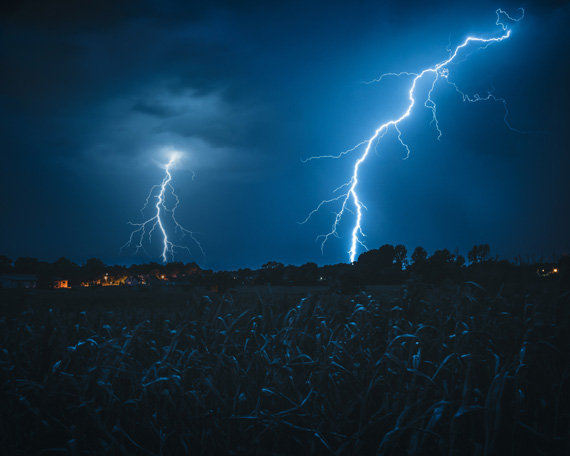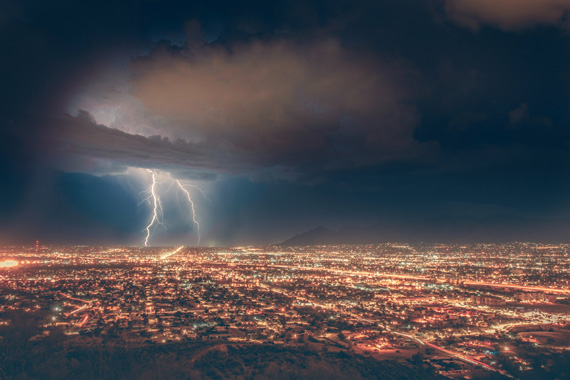Have you ever noticed any of those unbelievable lightning photos that some clever photography enthusiast has mastered? The fact is that lightning photos are both very challenging to capture and very engaging to viewers. A real challenge in photography is capturing fast moving subjects. When it comes to either traditional or digital photography, catching electrifying fork lightning is just too much of a enticement to see if we can “win” the challenge.

Photo by Max Saeling; ISO 500, f/10, 30s, 24mm.
So how do we apply our photography skills to capture sharp, brilliant streaks of color over our images? Getting great shots of forked lightning is not as difficult as you would think, or have been led to believe.
As a digital photography teacher I can honestly say that the first thing people do is buy way too much equipment for this exercise. You really just need a few simple things. A camera and a tripod are the main things. A lightning activated shutter trigger can also be helpful but is not necessarily required.
The main challenge when taking lightning shots is where to position yourself. I’ve had many a frustrating time, in the early days of my photography, trying to get the best angle, the best position only to find I had the camera pointed at completely the wrong part of the sky. And some of my digital photography lightning exposures were all wrong. I was thinking it was as hard as trying to predict a horse race with a crystal ball until I worked out the logic of it all and it started to become a lot of fun.
The first thing to keep in mind is to make sure your shutter is open. Lightning is sharp, short, and sweet. Its important to get the most out of the long, open shutter speed by leaving it open for a long time. You can do this with confidence on a really black night such as being in the country on a dark night without any city lights or too many clouds around for the light to bounce off. In the country you may have the freedom to leave the shutter open for as long as 60 seconds.
However, in the city it’s a bit different. What tends to happen is that due to other light in the atmosphere—light from buildings, streets, and cars—you can see this scene turns out much brighter on a 60 second shutter speed.

Photo by Michael D; ISO 400, f/7.1, 13s, 18mm.
A quick way to get great lightning shots is to find a good place to set up where you know lightning is either happening or is about to happen. Take your tripod, camera and shutter release cable. The great thing about a shutter release cable is that once the lightning has struck there is no need to keep the shutter open and you can simply press it the shutter will close.
Try setting your aperture to about an f/8.0 or so and leaving the shutter open from anywhere between 10 seconds to 60 seconds. (Setting B). Set your IS0 at 100, set the focus to infinity and wait.
Digital Photography Safety
It’s a good idea, any time in digital photography, not to jeopardize your safety. Digital photography is intensely fun and incredibly educational and creative, but it’s not worth risking your life for. As much as it’s a beautiful spectacle, its much more wise to stay well away from lightning. It’s carrying enough energy to give your house power for two months solid, so be careful.
About the Author:
Amy Renfrey writes for DigitalPhotographySuccess. She’s photographed many things from famous musicians (drummers for Prince and Anastasia) to weddings and portraits of babies. Amy also teaches photography online to her students.
Go to full article: How to Capture Lightning in Digital Photography
What are your thoughts on this article? Join the discussion on Facebook
PictureCorrect subscribers can also learn more today with our #1 bestseller: The Photography Tutorial eBook
The post How to Capture Lightning in Digital Photography appeared first on PictureCorrect.
from PictureCorrect https://ift.tt/3hTfO6B
via IFTTT






0 kommenttia:
Lähetä kommentti